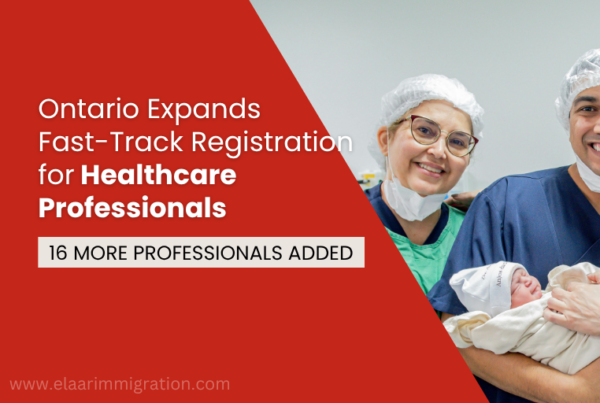Most employers assume that CPTPP work permits are simply about faster processing. But that’s only part of the story. The real advantage isn’t processing speed, it’s stability.
The key difference lies in the legal basis. CPTPP work permits are governed by section R204(a) of the Immigration and Refugee Protection Regulations (IRCC), which authorizes work permits “where the employment of a foreign national would result from the implementation of an international agreement.”
If your offer of employment falls under a trade agreement like CPTPP, IRCC doesn’t need to test the labour market. The agreement itself justifies this. That’s the key difference between applying under a policy and applying under an agreement.
Policies are temporary, but promises, when included in treaties, are binding until renegotiated. For employers, that’s a significant distinction. It eliminates the uncertainty of waiting months for an LMIA and offers a rule-based, legally defined pathway.
For professionals and executives, it means their eligibility isn’t influenced by market fluctuations or administrative interpretation, but by a transparent framework established within international law.
Does the CPTPP Work Permit Program Work the Same Way for All Countries?
The Comprehensive & Progressive Trans-Pacific Partnership (CPTPP) refers to Canada’s international agreement with ten major economies:
- Australia
- Brunei
- Chile
- Japan
- Malaysia
- Mexico
- New Zealand
- Peru
- Singapore
- Vietnam
These countries are some of Canada’s closest trade and innovation partners.
Here’s where it gets complicated. CPTPP temporary entry is reciprocal and depends on the schedule. What is available to an applicant varies by country, depending on its specific commitments: occupation coverage, spousal eligibility, and length of stay. Japan doesn’t have the same terms as Australia, which are different from Vietnam or Mexico under CPTPP.
The treaty structure works like this: CPTPP sets common categories (Business Visitors, Intra-Company Transferees, Investors, Professionals and Technicians), but each country submits its own Schedule listing what it will grant and to whom. Canada then extends its commitments only where the other country has made equivalent commitments.
For Intra-Company Transferees, Canada extends “specialist” coverage only to certain partner countries: Australia, Brunei, Chile, Japan, Mexico, New Zealand, and Peru have built-in country-specific differences. Canada’s Schedule for the Professionals and Technicians list includes occupation coverage specific to each country. Australia has a broad carve-in for higher-skilled roles (primarily TEER 0-1), though there are exceptions. This list varies by country, leading to practical differences in who qualifies by occupation.
What’s uniform across all CPTPP countries is the legal basis (IRPR s. 204(a)) and the requirement that employers still need an Employer Portal offer and a compliance fee under IRPR s. 209.11.
What’s not uniform is which occupations qualify, whether specialist ICTs are covered, and any carve-outs or exclusions a partner has filed. That’s why I screen by nationality first, then map to the relevant occupation coverage before we touch the Employer Portal.
How Is a CPTPP Work Permit Different from an LMIA Work Permit in Canada?
Employers must first demonstrate that no Canadian or permanent resident is available to fill a position before they can hire a foreign national. The process is thorough: recruitment advertisements, transition plans, prevailing wage validations, and detailed documentation. The typical LMIA processing time ranges from eight to sixteen weeks, depending on the stream and region. That’s before an applicant even applies for a work permit.
In contrast, CPTPP work permits completely bypass the LMIA requirement. Employers submit their offer through the IRCC Employer Portal and pay the $230 compliance fee, as required under IRPR s. 209.11. The worker applies directly for a permit citing R204(a). Processing times are often significantly shorter than LMIA-based streams; verify current timelines with the visa office.
More importantly, CPTPP work permits are treaty-bound, not policy-bound. While LMIA processes depend on shifting domestic priorities, treaty obligations require formal renegotiation to change. That legal stability allows employers and global corporations to plan workforce movements with confidence, without fear of sudden procedural shifts.
What Are the Four CPTPP Work Permit Categories?
CPTPP creates four distinct temporary pathways into Canada, each with different eligibility criteria, documentation requirements, and strategic implications. Understanding these categories is essential, as choosing the wrong one can mean the difference between approval and rejection.
- Business Visitors can stay in Canada for up to six months. This category covers individuals attending meetings, consultations, or negotiations, but they cannot enter the Canadian labour market. They’re not performing work that directly competes with Canadians. This pathway works for short-term business development, site visits, or contract negotiations. For most business visitors, a work permit is not required under sec 186(a) of the IRPR, as long as their activities remain within the scope of permitted business.
- Investors are individuals who establish, administer, or develop an investment and hold supervisory or executive roles. They enter Canada under the T50 exemption code of the International Mobility Program. This category is intended for people who are actively investing capital and managing that investment in Canada. The permit duration varies, but typically aligns with the business plan, is usually valid for one year, and can be renewed if the investment continues to operate. The key requirement: demonstrating substantial investment and control.
- Intra-Company Transferees (ICTs) include executives, senior managers, and specialists transferred from a foreign affiliate to a Canadian affiliate. These are processed under exemption codes T51, T54, or T55, with T53 applying to eligible spouses. Executives and managers can obtain permits for up to 3 years, with the possibility of extensions of up to 5 years (and 7 for specialists). Specialists must have either specialized knowledge of the company’s products or services and their application in international markets or an advanced understanding of the company’s processes and procedures. The ICT assessment under CPTPP is less strict than under other programs. Specialists are not required to undergo an assessment of the prevailing wage in Canada, which provides a significant practical advantage. However, IRCC still reviews the reasonableness of wages and the genuineness of the offer through Employer Portal data. Canada extends ICT benefits only to CPTPP partners that grant equivalent treatment.
- Professionals and Technicians may be issued initial work permits for up to one year under the exemption code T52. This category covers specific occupations listed in each country’s schedule. The educational and experience requirements vary by country and occupation. For example, Australian professionals are deemed to meet Canadian educational requirements if they’ve met Australian educational requirements and the Canadian employer provides a letter indicating their qualifications are satisfactory. Japan requires an associate’s degree or equivalent, or higher.
Ready to Apply for a CPTPP Work Permit
Get Started with CPTPP Work Permit with Licensed RCIC Experts.
Which CPTPP Category Is Right for You?
Let me show you how this works in practice.
I worked with a Japanese client who has senior software engineering management experience at a Japanese-based global tech company. The corporation planned to open a Canadian branch in Vancouver and wanted to transfer him for 18 months to lead the setup of the Canadian subsidiary’s engineering team. We evaluated three potential CPTPP pathways: Professionals and Technicians, Intra-Company Transferees, and Investors (since the branch investment was underway).
We recommended the ICT route.
Here’s why: ICTs under CPTPP are classified under LMIA exemption code T51 for executives and senior managers under IRPR s.204(a). The client was already a senior manager in Japan with over a year of continuous employment by the Japanese parent company, and he was to be transferred to a Canadian affiliate. This situation precisely matches the ICT definition.
Under Professionals and Technicians (LMIA-exemption T52), there are stricter educational and two-year experience requirements, as well as occupation lists.
That stream is typically used for specialists rather than senior managers. The Investor category could apply, since the branch was being established, but it is intended for individuals who invest their own capital.
In this case, the parent company was investing, not the individual. Using the Investor route would have been forced, riskier, and arguably misaligned. The Business Visitor visa was unsuitable because his role wasn’t just attending meetings. He would be actively directing engineering teams in Canada, entering the Canadian labour market.
The practical reasons were just as important as the regulatory ones. The parent company expected him in Canada for 18 months, possibly extending to 24.
ICT services suit that timeframe well. We also aimed for him to eventually switch to permanent residence through a PNP tech stream or Express Entry. Using the ICT route kept his Canadian work experience aligned for that transition.
The Canadian affiliate already had systems in place: payroll, benefits, and compliance frameworks. That made the ICT transition seamless.
What Happens If You Choose the Wrong CPTPP Category?
If we had recommended Professionals and Technicians instead of ICT, several risks could have arisen. His title and role as senior manager might not match the occupational definition of a specialist or technician. An officer could reclassify or reject it.
The occupation list for his country under CPTPP might exclude senior management roles within the Professionals stream, leading to eligibility issues.
We would have restricted his stay to a maximum of 12 months for Professionals, instead of the 18 or more months that are realistic under ICT. This would cause administrative disruptions during his assignment. It would also convey a weaker narrative:
“You’re a technician or contractor” rather than “transferred executive.” That increases the risk of refusal and undermines the PR transition strategy.
If we had pushed the Investor category, the business case would have been weaker. Because he wasn’t directly investing capital or establishing the business, the immigration officer would likely request proof of substantial investment and control. That triggers more lengthy due diligence and delay, undermining the employer’s timeline and their ability to start quickly. If we had used the
Business Visitor visa, he would have had limited ability to perform hands-on engineering management. He couldn’t fill the formal labour market work function. If he worked beyond what is allowed under Business Visitor, that could trigger retroactive compliance issues or jeopardize future applications. It would also weaken the long-term continuity of his Canadian residence history, diminishing the PR planning strategy.
Can My Spouse Work in Canada If I Hold a CPTPP Work Permit?
One of the underappreciated advantages of CPTPP is spousal work authorization. Canada took reciprocal commitments for the entry and work authorization of spouses of professionals and technicians from Australia, Chile, Japan, and Mexico. For intra-corporate transferees, Canada grants spousal work authorization with Australia, Brunei, Chile, Japan, Malaysia, and Mexico. This creates country-by-country variations that require careful navigation.
When a principal applicant qualifies under CPTPP and their spouse is eligible for an open work permit, that changes the family’s entire economic calculation. Two incomes, both legally authorized, both building Canadian work experience for potential PR pathways. But you need to know which countries have reciprocal spousal commitments before you build the strategy.
What Are the Employer Compliance Requirements Under CPTPP?
Every employer hiring under CPTPP must comply with IRCC’s Employer Portal obligations. Before a worker applies, the employer must file an offer of employment, pay the compliance fee, and retain all records for six years after the work permit is issued.
Employers may be inspected under IRPR s.209.5–209.9, which means wage accuracy, role authenticity, and employment conditions must align with what was declared. CPTPP doesn’t remove compliance; it elevates it. The system is designed for trust, but it verifies.
Can a CPTPP Work Permit Lead to Canadian Permanent Residence (PR)?
CPTPP permit durations vary by category. Professionals and Technicians typically receive one-year terms; Intra-Company Transferees may stay up to three years, with potential extensions; Investors follow their business plan timelines.
Extensions require proving that the original treaty conditions still apply, maintaining the same employer relationship, role definition, and justification under IRPR s. 204(a). For ICTs, that means confirming the transfer remains temporary and the employee retains foreign ties. For Professionals and Technicians, it means continued employment in the same occupation and valid qualifications.
Each renewal helps build Canadian work experience that can support permanent residence under IRPR s. 87.1. The key is timing, staying in a valid status while maximizing eligibility for Express Entry or a Provincial Nominee Program. Canadian experience gained through CPTPP counts toward Express Entry when the role falls under NOC TEER 0, 1, 2, or 3, adding valuable CRS points.
For ICTs, the challenge is demonstrating the transfer’s temporary nature while pursuing PR — balancing dual intentions under IRPA s. 22(2). For Professionals and Technicians, the transition is usually more straightforward.
Extensions should serve as bridges, not crutches – each one advancing the applicant toward long-term stability and a well-timed move to permanent residence.
What Are the Most Common Mistakes in CPTPP Work Permit Applications?
Mistake #1: Assuming Nationality Alone Determines CPTPP Eligibility
The biggest error I see is assuming CPTPP eligibility is automatic based solely on nationality. Eligibility depends on occupation, role definition, employer structure, and country-specific schedule commitments. You need to map all four variables before filing.
Mistake #2: Misclassifying the Category to Speed Up Processing
Misclassifying the category to meet a faster timeline introduces significant risk. Selecting Professionals and Technicians when the role is truly executive-level ICT introduces refusal risk and weakens long-term strategy. The category should reflect the actual role, not the desired processing speed.
Mistake #3: Ignoring Spousal Work Authorization During Initial Planning
Ignoring spousal eligibility during initial planning is a costly oversight. If your country has reciprocal spousal commitments, that’s a significant value-add. If it doesn’t, you need to plan for the spouse’s status separately, which affects family economics and settlement strategy.
Mistake #4: Failing to Document Treaty-Based Justification in the Offer Letter
Failing to clearly document the treaty-based justification in the employer offer letter creates unnecessary delays. The letter must explicitly mention the CPTPP category, the relevant treaty provision, and how the role qualifies under the eligibility criteria. Vague offer letters lead to processing delays and increased scrutiny from officers.
Mistake #5: Not Planning the Permanent Residence Transition from Day One
Not planning the PR transition from the start means missing strategic opportunities. Each month of Canadian work experience is valuable. Every role definition impacts NOC classification. Every employer’s compliance record influences future applications. If you’re viewing the CPTPP permit as a short-term fix without considering the PR pathway, you’re missing out on potential benefits.
How Do I Choose the Right CPTPP Strategy for My Business or Career?
When an employer asks me about CPTPP, I start with four questions.
- What’s the applicant’s nationality? That determines which schedule applies and what coverage exists.
- What’s the actual role? That determines which category fits: Business Visitor, Investor, ICT, or Professional/Technician.
- What’s the employer structure? That determines whether ICT or Investor makes sense, or whether we’re limited to Professional/Technician.
- What’s the long-term goal? That determines whether we’re optimizing for speed, duration, spousal work rights, or PR transition.
Those four questions create the decision framework. That’s how you turn a work permit strategy into a settlement strategy.
Take Professional Help from Licensed Consultants
Navigating CPTPP work permits requires precise understanding of treaty commitments, occupation schedules, and country-specific eligibility criteria. That’s where specialized expertise makes the difference.
Keshav Sharma, a Regulated Canadian Immigration Consultant (RCIC), leads a team with extensive experience in treaty-based work permits and employer compliance under the International Mobility Program. Our team maps eligibility across all four CPTPP categories including Business Visitors, Investors, Intra-Company Transferees, and Professionals and Technicians.
Don’t risk refusal or misclassification. You can contact our experts today to develop a CPTPP work permit strategy tailored to your business and immigration goals.










